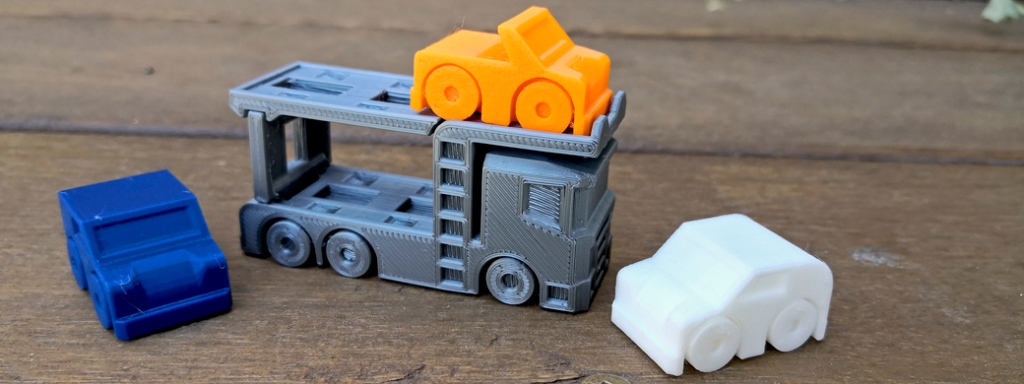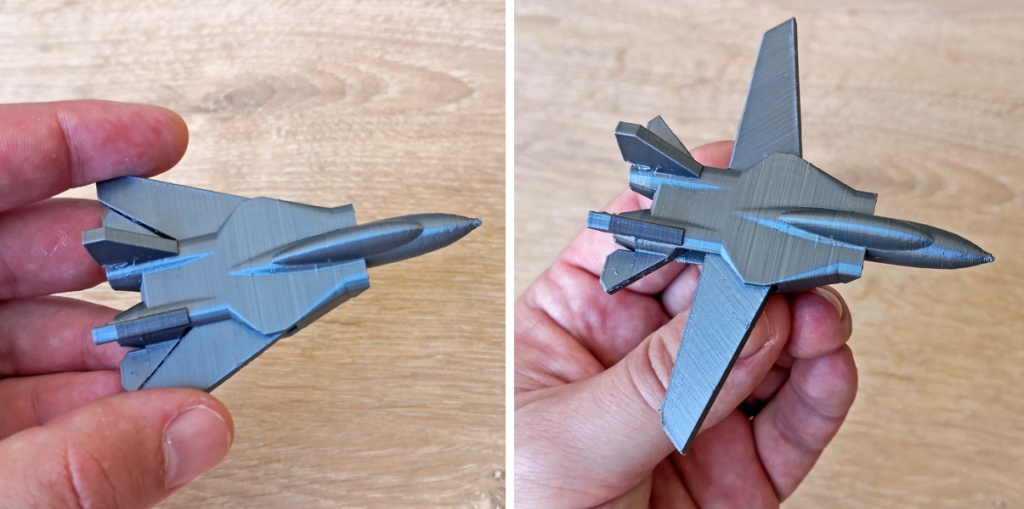
My desk is covered with 3D prints, some of them my own designs, and others are just cool examples of what can be done with a home 3D printer. This is one of those examples.
Stian Ervik Wahlvaag (@agepbiz) has created a clever range of 3D printed vehicles known as “Tiny Surprise Eggs” – why? Well, because they fit within an egg of course! The unique feature of each toy (and egg) is that they feature moving parts printed in place, without the need for any support material. Once the toy is taken off the printer, it is ready to go. The example pictured above is “Surprise Egg #7 – Tiny Car Carrier” and all the vehicle wheels rotate, and the car carrier itself can raise and lower the ramps.
While I didn’t print the egg, I did scale these prints up 200% to have something a little bit more child-friendly. Unfortunately I enjoy them so much they have permanently stayed on my desk, but I promise I’ll print my son another set! The moving parts still work really well at this increased scale and provide some clever design tricks to ensure multiple parts can be printed as an assembly. As an example, above is a cross section through one of the cars showing how the wheels and axels are designed within the main body of the car. Some simple angled details mean that no support material is needed when printed in this orientation, yet from the outside the car just looks like it has normal cylindrical wheels. Great example of how to design for additive manufacturing (DfAM) as it’s known.

Following the vehicle carrier, I’ve also 3D printed “Surprise Egg # 6 – Tiny Jet Fighter” which features wings which fold out, again at 200% scale and with no support material. Both of these designs, as well as at least 8 more surprise egg vehicles, are free to download from Thingiverse, and highly recommended as a way to test your print settings (if there are any issues the moving parts may end up fused together), and learn a few of the tricks for designing assemblies for 3D printing.
If you print these yourself, or have any other recommended prints that include clever design details like moving parts, please share them in the comments section.
– Posted by James Novak






